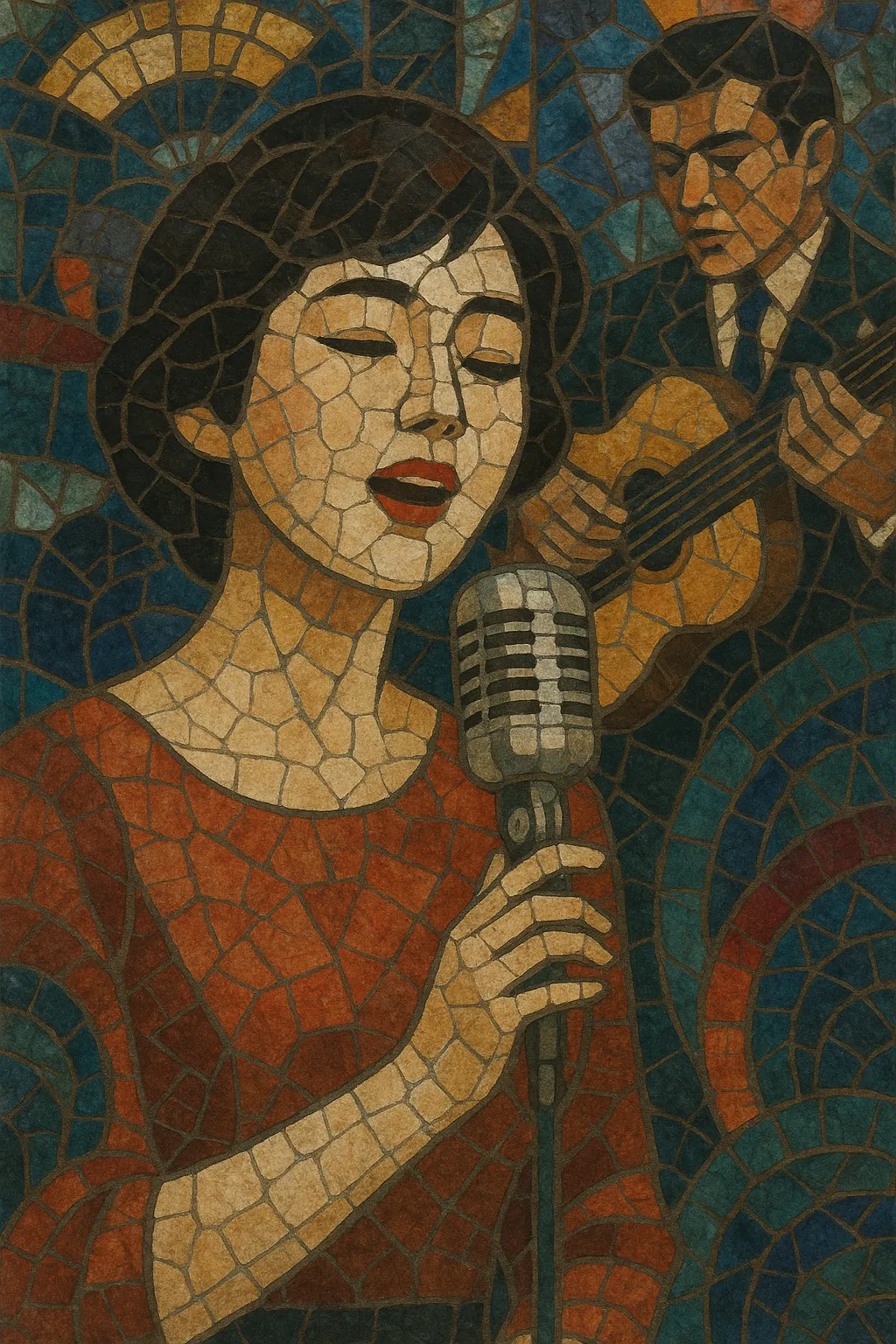Kayōkyoku is a broad umbrella of Japanese popular song that dominated the nation’s mainstream from the prewar era through the 1980s, before the term J‑pop became prevalent. It blends Western popular idioms—such as jazz, swing, tango, and later rock and roll—with Japanese melodic sensibilities and lyric themes.
Stylistically, kayōkyoku favors clear, memorable melodies, polished vocal delivery, and orchestral or big‑band arrangements. Its songs often use Western song forms (AABA or verse–chorus), while retaining a distinctly Japanese emotional tone rooted in nostalgia, romance, and everyday urban life.
Kayōkyoku emerged alongside and out of ryūkōka in the late Taishō and early Shōwa eras as Japan absorbed Western music through recordings, revues, and dance halls. Jazz, swing, and tango orchestras became popular in urban centers, and record companies cultivated singers backed by big bands and studio ensembles. Early kayōkyoku codified a modern, city‑oriented songcraft distinct from traditional forms while keeping Japanese melodic inflections.
After WWII, American entertainment and technology accelerated stylistic expansion. Crooners, jazz‑pop singers, and Latin dance influences (mambo, bolero, tango) flourished. The late 1950s brought rock and roll and doo‑wop into kayōkyoku’s toolkit, and television fueled star systems. Idol prototypes and harmony duos (e.g., The Peanuts) coexisted with jazz‑tinged and orchestral pop, making kayōkyoku a capacious mainstream.
Singer‑songwriters and band‑led “new music” modernized kayōkyoku’s harmonies and lyric perspectives. Idol kayō crystallized a glossy, TV‑driven production model, while sophisticated urban pop currents (a foundation for later city pop) added funk, soul, and AOR elements. By the late 1980s, industry and media increasingly adopted the label “J‑pop,” but its production practices, melodic priorities, and star‑making apparatus were all rooted in kayōkyoku.
Kayōkyoku provided the structural DNA for Japan’s pop ecosystem—arranging practices, melodic phrasing, television promotion, and the idol system—shaping enka’s popular presentation, city pop’s sophistication, and the mainstream sound now known globally as J‑pop.


